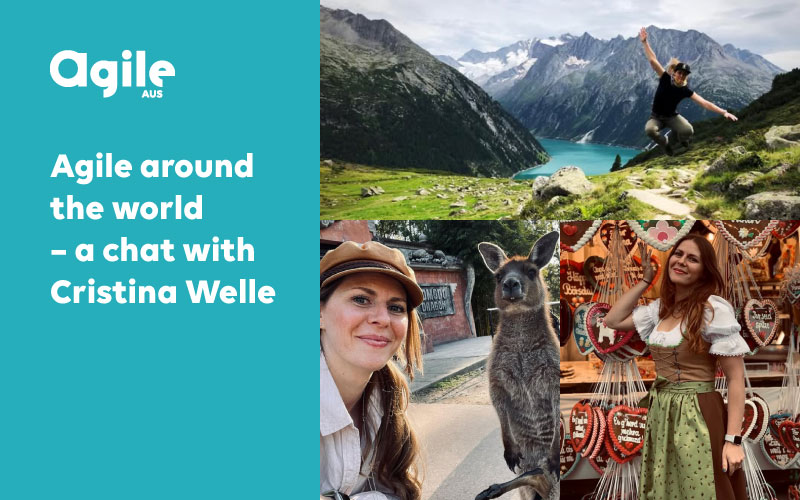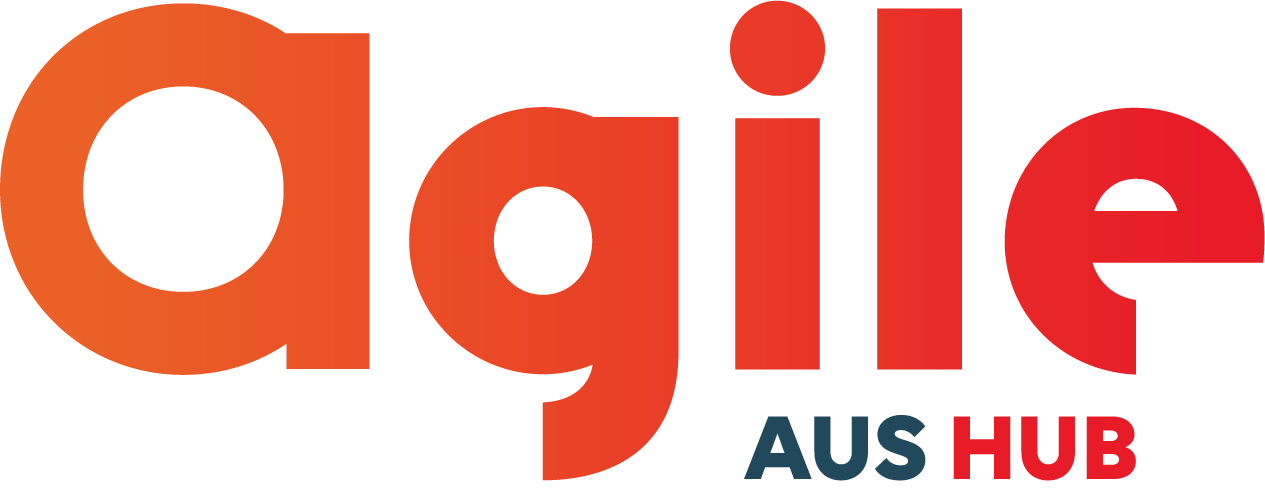
Agile around the world – a chat with Cristina Welle
Originally from Germany, Cristina Welle built her career predominantly in Europe. However, after a brief stay in Australia, she fell in love with the country – and now, we’re lucky to have her here for good!

As a bit of background, you’ve been working across many industries and continents in recent years, have you noticed any patterns in what challenges different cultures are facing?
I would say that change and adopting a new way of working is difficult for everyone, regardless of culture or organisation. The most consistent question I’ve received in the many interviews I’ve had lately is how does one manage resistance to change, especially when it’s forced upon them?
I’ve learned that I can’t change a person directly, nor should I try. What I can influence is their environment, which creates the conditions for a shift in mindset to happen naturally. It always reminds me of this quote by A. Den Heijer: When a flower doesn’t bloom, you fix the environment in which it grows, not the flower.
Take, for instance, a leader who has been working a certain way for 20 years. Asking them to abandon their old processes is an enormous ask. It’s crucial to meet people where they are, genuinely understand their concerns, bring compassion, and guide them through change incrementally. Organisational transformation is a journey, not a quick fix.
Fear often plays a significant role in resistance to change—fear of failure, fear of letting go, and fear of the unknown. Before pushing for change, we need to acknowledge and understand these fears. The key to addressing them lies in practicing compassion and patience while adopting a strategic and holistic approach. By doing this, we create an environment where people feel supported and empowered to embrace new ways of working.This often requires significant mindset shifts at both leadership and team levels.
Another universal challenge is the pace of change. And this brings my thoughts to this formula from I. Newton: f = ma. Force equals mass times acceleration. When the mass we aim to move is big, we must apply more force. If we wish to change the direction of a large company or solve a meaningful problem, we need to apply a substantial force. This is often what we do. We implement repositioning or a major reorg. The challenge with applying big force to anything, however, is that it unsettles us. We fear it may cause more harm than good, undermining the circle of safety. But, there is another variable that we often ignore: the “a,” which represents acceleration. Who says changes have to be super quick or happen all at once?
Interestingly, I’ve also noticed that trust and psychological safety are foundational challenges across the board, regardless of culture. Building an environment where people feel safe to fail, share ideas, and offer honest feedback is often the first step in making agility successful.
Ultimately, while the manifestations of these challenges might differ based on cultural context, the need to align leadership, foster trust, and embrace change is a constant in every region.

There have been a lot of interesting conversations happening lately about the value of ‘Big A agile’, what does true agility mean to you?
As G. Booch wisely said: A fool with a tool is still a fool. We need to stop the bad big A agile!
All it’s about is fostering a mindset and culture that values adaptability, continuous learning and feedback, and delivering meaningful outcomes to user and market needs. True agility emphasises responsiveness over rigidity, collaboration over silos, and experimentation over perfection and all this by putting people first.
It’s about understanding the why—why we do what we do? It’s about being close to the people who use your product, truly understanding their needs and pain points, gathering feedback early, and iterating and adapting quickly based on their needs. Agility is not a standalone practice. It requires collaboration—whether with Business, Development, or Operations. To truly embody Agile, we need to take a holistic view of the organisation.
The way our organisation is structured around value—think here about value streams & team topologies—how our teams are aligned and how we communicate with each other, and the language we use, will directly affect the success of our efforts and the value we deliver. Agile has some inspirational ideas on how this can happen, but it requires a comprehensive, people-centered approach, leadership support and a mindset shift to truly take hold.
Before agility can work, we need to embrace a growth mindset to change, having the courage to step out of the comfort zone, encourage open communication, and create a safe space for people to express their ideas and concerns. Without that feeling of safety and trust, the process won’t work.

What would you say helps guide you when trying to help organisations do better work?
My greatest guides are compassion, patience, courage, treating people as human beings rather than human doings, sharing knowledge generously, and paying attention to what isn’t said. It’s important to stay open to everyone’s perspective—what might they see that I don’t see?
Meet the team where they are, with compassion and without judgment and understand the current state and the problem we need to solve. We all operate at different levels, have unique perspectives on things, and face different challenges.There is not about who is wrong and who is right—it’s about how we come together to do the right thing as a team. Teamwork makes the dream work!
Building trusted relationships and asking for help when needed is invaluable. Sharing knowledge and empowering others to take accountability for solving problems is equally important. But building trust and strong connections takes time and effort and being patient in a fast-paced environment can be challenging. It requires balance—staying calm and focused amid the urgency while still giving people and processes the time they need to unfold effectively.
And there’s another thing—it takes me back to the Agile Manifesto and makes me wonder, how can we bring both sides of it into harmony when solving problems or do better work? It’s not about choosing one side over the other; it’s about finding the balance.

Stay in the loop
To receive updates about AgileAus and be subscribed to the mailing list, send us an email with your first name, last name and email address to signup@agileaustralia.com.au.

0 Comments